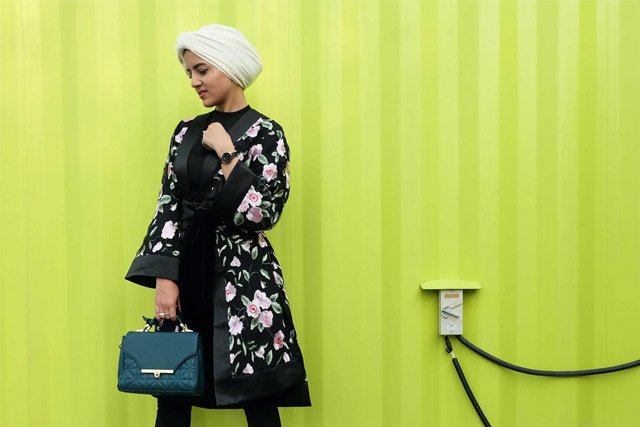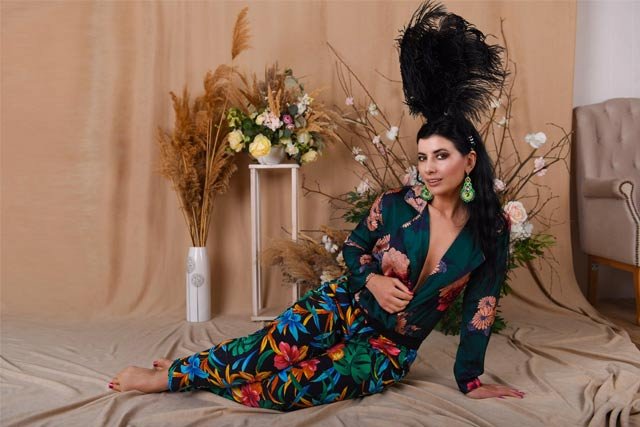
Theories of color analysis suggest that certain colors can accentuate an individual’s attractiveness and make them look vibrant and alive. Unflattering colors, on the other hand, can draw attention to flaws like wrinkles and uneven skin tone. Knowing your seasonal color palette can help limit your wardrobe to those that flatter you.
Color Analysis

Color analysis is a method of determining the colors that flatter a person’s skin tone. A fashion consultant or stylist generally does it, which can be quite elaborate. For example, a client draped in white might have various color palettes tested against their bare face to discover the one that enhances their features. Although not a precise science, this approach is valuable for assisting those uncertain about what suits them.
In recent years, color analysis has enjoyed a revival. Its popularity has increased alongside the popularity of the color palette app C Color, which matches people with clothing colors that make them look their best. People specializing in color analysis are called “color consultants” and can be found worldwide. In addition, many online courses offer training to become a certified color consultant.
According to color theory, certain colors can emphasize and enhance a person’s features or draw attention to less desirable qualities. For example, red is believed to signal sexual attractiveness, while dark colors like navy can convey authority and power. Moreover, using the right colors can even boost workplace morale and productivity.
Most use Munsell’s system with hue, temperature, and chroma. Chroma indicates saturation; blues/purples cooler, yellows/greens warmer. Natural colors matched for harmony. Analysis categorizes individuals into seasons based on eye and hair color. Kentner suggests using skin tone. Knowing your seasonal color reduces wardrobe choices and shopping time. Not all colors in your season flatter, balance matters. Occasional off-season colors are fine if balanced with complexion-enhancing hues.
Color Trends

In the midst of this global economic crisis, it’s not surprising that Argentina fashion trends have taken on a much more practical approach. In addition to embracing new silhouettes, there’s a growing emphasis on natural fibers and sustainable design.
Argentina loves to keep up with fashion, but they also tend to value quality and classic style. This is especially apparent in Buenos Aires, where residents dress to impress rather than look comfortable. Sweatpants are rarely seen, and it’s rare to see someone in jeans without a pair of heels or boots. This trend toward more modest attire has helped to redefine what it means to be fashionable in Buenos Aires.
Regarding color, Argentines love to experiment with new combinations and styles. They are also drawn to vibrant colors, such as deep reds and bright oranges, as well as neutrals, like grays and whites. The result is a mix of traditional and modern, reflected in the city’s vibrant street art, architecture, and culture. Local brands blending modernity and traditional craftsmanship thrive in Argentina. Animana employs natural fibers like llama and linen, crafting fabrics traditionally. Manto, for two decades, has employed local fibers, especially llama wool.
Turtlenecks resurge, versatile for all genders, paired with blazers or cardigans, adaptable year-round. To explore Argentina fashion, consider a Buenos Aires shopping tour. Argentines grapple with dual national identity, debating their Western culture versus Latin American mestizo roots. Argentine artists’ global success drives a quest for national essence in diverse cultures, where color aids self-discovery.
Color Combinations

Argentina exudes a remarkable sense of fashion, and you will see local beautiful women wearing chic clothes. You will find they tend to wear neutrals and earth tones. They also like to add a pop of color with a blouse or scarf. It is common to find ladies in Buenos Aires wearing a beautiful blue dress with red accents or a white blouse with bright pink accessories. The summer weather in Buenos Aires can be quite hot and humid, so it is best to pack light clothing and accessories. Breathable tops that allow the body to breathe are essential, especially when walking and sightseeing all day. You may also want to pack a cardigan or pashmina that can be used to dress up any outfit, plus keep you warm in case it does cool off at night.
Many people now use color analysis to determine which colors flatter their skin tone. Discovering what hues will work and look good on you is easy. It also helps you avoid wasting money on clothing that will never flatter your figure or look good. There are several methods of analyzing an individual’s coloring; the most popular is seasonal analysis. This method places an individual into one of twelve color seasons. It is based on the tonal contrast of an individual’s eye, hair, and skin colors.
Color analysis asserts that specific colors evoke emotions and messages. Certain hues can highlight or downplay facial features. For instance, some colors can make a face appear pale, while others lend a healthy radiance. Color analysis is resurging among millennials and Gen Z. It’s becoming a stylish trend, visible on social media, where users share videos using fabric swatches to discover their suitable colors. This prompts them to buy clothing and accessories aligned with their color season.
Color Schemes

Color schemes can be a valuable tool for designing a garment, and many different color schemes are available. The tetradic color scheme, for example, uses four colors arranged into two complementary pairs. This scheme is vibrant but can be difficult to harmonize. Using each color’s tints, tones, and shades can help achieve balance and harmony. Other common color schemes include triadic and analogous color combinations.
Argentine culture often roots traditional notions of masculinity and femininity in patrilineal descent and social hierarchy. The dominant gender is men, and they largely exclude women from positions of power. Women are more inclined to find employment in the lower-paid sectors of industry and the professions. The number of female senators and ministers in Argentina is lower than that of male deputies.
Amid the onset of industrialization, migration from rural areas to cities became commonplace. This change in demographics led to a shift in the country’s cultural identity, and it caused Argentine intellectuals to seek clues as to what constituted a national soul.
The government promoted immigration, causing a rise in foreign-born residents, especially in Buenos Aires. Many newcomers were mestizos with European ancestry, competing for jobs alongside locals. This challenged national identity notions, leading Argentines to seek cultural meaning in tango music.
Defining national identity centered around gaucho culture. Some saw gauchos as representatives of an old order ruled by wealthy estancieros, while others, like Evita, envisioned them as inclusive of workers and women. This dynamic shapes the self-image and cultural landscape of Argentina fashion.








